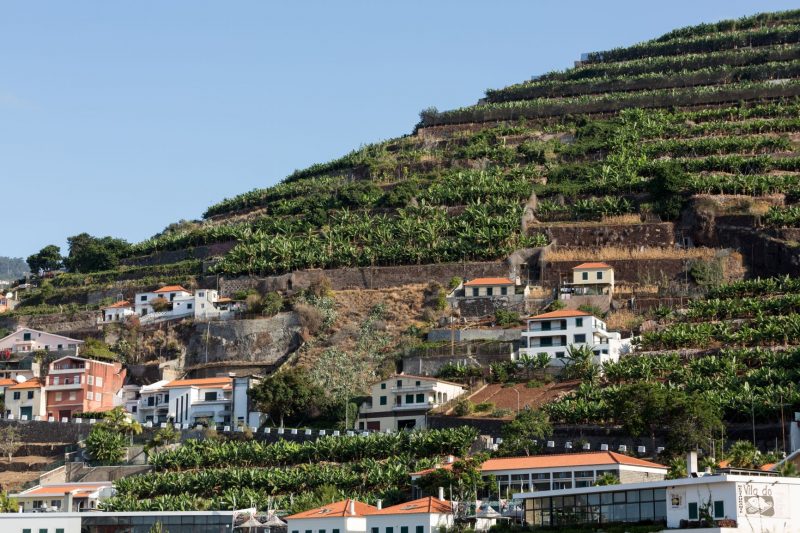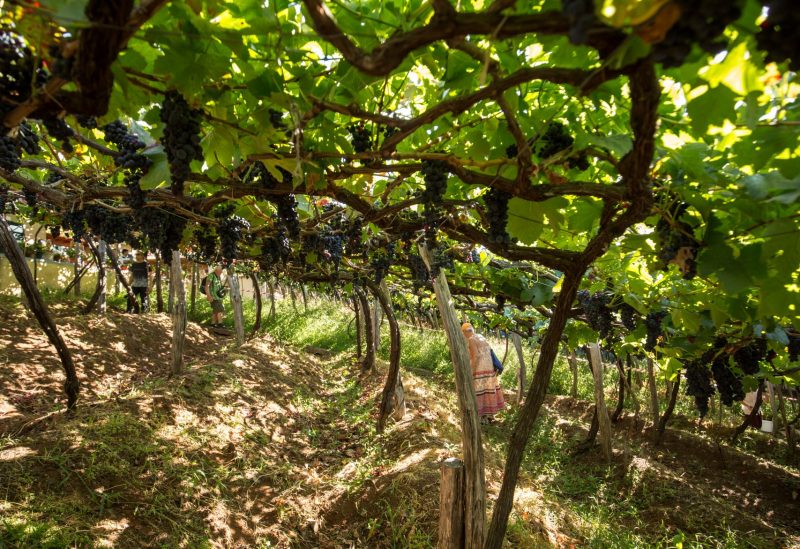Think of Portugal and fortified wine and, for most people, Port wines from the Douro Valley come to mind. But just off Portugal’s coast lies an island bearing the name of the country’s “other” fortified wine, one possessing a deep, rich history and producing wines of incredible intrigue, diversity and versatility.
The Madeira Islands are a Portuguese archipelago in the Atlantic Ocean approximately 1,000 kilometres southwest of Lisbon and directly west of Morocco. The island of Madeira is the largest of the group, having been discovered in the early 15th century, with settlement commencing shortly thereafter.

From the beginning, Madeira’s roots were based in agriculture: wheat, sugarcane and grapes. The island combines forests, mountains and valleys with steep, terraced vineyards, reminiscent of steps leading up from the sea. The island’s climate is hot and humid, with average annual temperatures generally hovering between 20˚C and 24˚C. The soils are volcanic in origin and the vines are mostly grown on pergolas, planted alongside bananas, yams and other fruits and vegetables. Steep slopes combined with having to pick the grapes from underneath make harvesting a labour-intensive, often backbreaking endeavour.

Although Port and Madeira are both fortified wines — meaning they have had a neutral spirit added to arrest their fermentation — the similarity really stops there. Ports are generally sweet wines and, while many have the ability to age, they tend to deteriorate relatively quickly once exposed to air. Ironically, the two factors — heat and oxygen — to which we all learn to avoid exposing wine are responsible for the style of Madeira wines and their ability to seemingly last forever.
Historically, the West Indies were a major market for these wines. In the 17th century, they were transported from Madeira in barrels stored in the holds of ships, which would reach very high temperatures during the journey. On occasion, some of the barrels would return to Europe and this is when it was discovered that the effects of the journey (namely that heat accelerated the aging of the wine) had enhanced the wine’s intensity and complexity, resulting in a nutty character. In order to replicate the same effects, Madeira producers developed estufagem, a process during which the wine is intentionally heated, thus contributing to its unique character.
During estufagem, wine that has already undergone the fortification process is placed into stainless steel tanks. Hot water is run through copper coils that snake through the interior of the tanks and it heats the wine for several months, mimicking the effects of a transatlantic journey. However, this accelerated process is used only for lesser expensive wines. For higher quality wines, a more natural process known as canteiro is used. As part of this process, fortified wine is casked and aged in warehouses for a minimum of two years. The warehouses are not temperature controlled and the natural heat and humidity of the island results in oxidative aging, which causes evaporation and concentration and results in wines with complexity, intensity and increased nuttiness as they age.
For me, the diversity and versatility of the styles of Madeira were a revelation. The wines can range in style from dry to sweet (depending on when the neutral spirit was added to arrest the fermentation), with specific grape varieties traditionally associated with the level of sweetness. Sercial is used to make dry wines, Verdelho is common for semi-dry wines, Bual (Boal) for semi-sweet and Malvasia for the sweetest wines (Malmsey). The best quality Madeira wines tend to be made using these white grape varieties, plus occasionally Terrantez. Tinta Negra Mole, a red grape, is widely used for producing less expensive wines in greater quantities. There are several other grape varieties whose use is authorized, but the aforementioned ones are the most common.
Regardless of the style, a common factor of these wines is their freshness and acidity, resulting in my revelation about how versatile these wines can be with food. This was highlighted on numerous occasions during my stay on Madeira, but in particular during a dinner at the Four Views restaurant. Here, the chef paired each dish with a different style of the island’s most famous wine. Black scabbardfish roe with tomato chutney was matched by a 15-year-old Henriques & Henriques (H&H) Verdelho Madeira; lemongrass mackerel with a chestnut purée was paired beautifully with a dry 10-year-old Barbeito Madeira made from Sercial; grilled octopus and olives with H&H 10-year-old Sercial; tuna belly and game bird sausage with Blandy’s 10-year-old Verdelho; and panna cotta with saffron caramel with Justino’s 10-year-old Boal. Each pairing demonstrated the remarkable ability of Madeira, particularly with the savoury dishes, to be more than simply an after-dinner sipper.
The eye-openers began almost upon arriving on the island, with an “introductory” tasting of some 20 wines at Barbeito, a relatively young Madeira house founded in 1946. Barrel samples of Tinta Negra Mole from 2014 and 2009 allowed a comparison of the different stages of the wine’s evolution. The 2014 had been in cask for only six months and was a bright ruby colour with an intense fruity character. The 2009 had started to oxidize, showing a slightly brown colour and nutty flavours. Both were from barrels aged in canteiro and although the 2009 wine was more evolved, it was not yet ready to be released as Madeira as it was not yet at an appropriate level of oxidation.
At Justino’s, the largest producer and exporter of Madeira, a horizontal tasting of 10-year-old Madeira allowed a comparison of grape varieties. The 10-year-old Sercial was amber in colour, with orange blossom, honey, bright acidity and a dry finish. The Verdelho was slightly darker in colour with dried stone fruit and nutty aromas and flavours with focused acidity and a dryish finish — it cried to be served with salted marcona almonds. The Boal was dark amber, showing molasses, dried fruit and a slightly sweet finish, but still with a lifted acidity. Finally, the Malmsey tended towards brown in colour. It was focused and rich in flavour, expressing tobacco and spice, yet still fresh and delicate despite having 130 grams per litre of residual sugar — a great example of how acidity in a wine can balance its sweetness, keeping it refreshing and drinkable rather than cloying and heavy.
Perhaps my greatest revelation was Madeira’s ability to age and seemingly last forever, even once the bottle has been opened. Single vintages from 1964, 1954, 1940 and 1934 were all distinct, depending on the grape variety used, but all still possessed a freshness even when tasting from bottles that had been open — in some instances — for months.
With the versatility of these bottles, it is remarkable that the availability and use of Madeira is so limited. Restaurateurs and sommeliers could add another dimension to their menus and wine lists through food and wine pairings and offering clients the ability to try older vintages. There is no concern over open bottles going off as the oxidative manner in which these wines are made allows them to last forever. I have a bottle of 1969 Bual that has been open since December 2015 and it still tastes essentially the same as when I first opened it. And relative to the prices of vintage Port, old Madeira is a deal. Perhaps it’s time for somms, chefs, restaurateurs and wine lovers to add the wines of Madeira to their repertoires.
